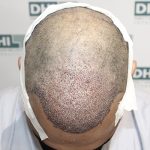What is the Cost of DHI Hair Transplant in Bangkok, Thailand?
Hair plays a significant role in individual lives, symbolizing personal identity, culture, and self-expression. It can reflect social status, fashion trends, and even political statements. In Thailand, hair holds cultural significance, with traditional styles often seen during festivals and ceremonies. The Thai lifestyle blends modernity with tradition, marked by a deep respect for monarchy and Buddhism. Thai people are known for their hospitality, warmth, and strong community ties. Family is central to their lives, and they maintain close-knit relationships. Personalities in Thailand tend to be polite, humble, and reserved, adhering to the concept of “Sanuk,” which means finding fun and joy in life. Thai culture is rich with festivals, vibrant street markets, and delicious cuisine, making it a unique and welcoming place for locals and visitors.
Hair Loss in Men and Women
Men: The most prevalent cause of hair loss in men is male pattern baldness, also known as androgenetic alopecia. It typically commences with a receding hairline and thinning at the crown, eventually leading to partial or complete baldness. This condition is mainly hereditary and is influenced by hormones, particularly dihydrotestosterone (DHT). The classification of hair loss in men or male pattern baldness is defined under Norwood Scales.
What is the Norwood Scale?
The Norwood scale, the Hamilton-Norwood scale, is the premier classification system for measuring the extent of male pattern baldness. Developed over decades, this scale categorizes the typical patterns of hair loss seen in men, providing clear, easy-to-reference images to illustrate the different stages of balding.
While other classification systems cater to both sexes or specifically to female pattern baldness, the Norwood scale remains the most widely used by clinicians. It not only aids in diagnosing the degree of baldness but also plays a critical role in discussing treatment options and educating patients on available solutions. Its clear, easy-to-reference images illustrate the different stages of balding, making it an invaluable tool in the fight against male pattern baldness.
The Seven Stages of Hair Loss According to the Norwood Scale
The Norwood scale is divided into seven stages, each representing a distinct level and pattern of hair loss:
Stage 1: Minimal or No Hair Loss
At this stage, there is no significant hair loss or recession of the hairline.
Stage 2: Early Recession
A slight hairline recession begins around the temples, often called an adult or mature hairline.
Stage 3: Initial Balding
Clinically significant balding starts with the hairline becoming deeply recessed at both temples, forming an M, U, or V shape. These areas are typically bare or sparsely covered with hair.
Stage 3 Vertex: Top of Scalp Balding
The hairline remains at stage 2, but significant hair loss occurs on the top of the scalp (the vertex).
Stage 4: Advanced Recession
The recession of the hairline is more pronounced than in stage 2, with sparse or no hair on the vertex. A band of hair separates the two balding areas, connecting the hair on the sides of the scalp.
Stage 5: Larger Balding Areas
The two areas of hair loss become more significant, though still separated by a narrower and sparser band of hair.
Stage 6: Connecting Bald Areas
The balding areas at the temples merge with the balding area at the vertex, with the band of hair across the top of the head either gone or very sparse.
Stage 7: Severe Hair Loss
In the most severe stage, only a thin band of hair remains around the sides of the head, which is usually not dense and may be acceptable in texture.
Norwood Class A Variation
The Norwood class A variation represents a less common pattern of hair loss. In this pattern, the hairline recedes uniformly without leaving an isolated island of hair in the middle. Unlike the standard Norwood stages, the vertex has no balding area; the hairline recedes directly from the front to the back.
Conclusion of Norwood Scale
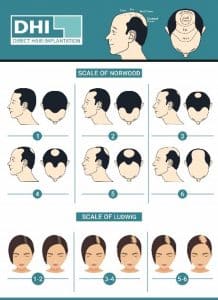
Understanding the stages of hair loss on the Norwood scale is crucial for diagnosing the severity of male pattern baldness and exploring appropriate treatment options. By identifying the stage of hair loss, doctors and hair transplant surgeons can provide more accurate and personalized advice to their patients.
Women, on the other hand, experience hair loss differently. It is often characterized by overall thinning rather than specific bald spots. Female pattern hair loss, also known as androgenetic alopecia, leads to diffuse thinning over the top of the scalp while preserving the frontal hairline. Hormonal changes, such as those during menopause, can significantly exacerbate hair loss in women.
Stages of Hair Loss
In Men:
- Stage 1: Minimal hair thinning, mainly at the hairline.
- Stage 2: Noticeable receding hairline and thinning around the temples.
- Stage 3: Significant receding hairline and thinning at the crown.
- Stage 4: Severe thinning on the top and sides, forming an ‘M’ shape.
- Stage 5: Hair loss extends further, leaving only a band around the sides and back.
- Stage 6: Only a narrow band of hair remains.
- Stage 7: Complete or near-complete baldness on the top of the scalp.
In Women:
- Stage 1: Slight thinning on the top of the head.
- Stage 2: Increased thinning, with noticeable widening of the part.
- Stage 3: Diffuse thinning, with visible scalp and reduced hair volume.
Impact on Personal and Professional Lives
Hair loss can profoundly affect self-esteem and confidence, leading to emotional distress and social withdrawal. In personal lives, individuals may feel less attractive and face challenges in relationships. The stigma associated with hair loss can exacerbate feelings of inadequacy and low self-worth.
The impact can be just as significant in professional settings. Appearance often influences perceptions of professionalism and capability. Individuals with noticeable hair loss may face biases and feel less confident in interviews or meetings.
Reasons for Hair Loss
Personal Life:
- Genetics: A family history of hair loss is a strong predictor.
- Hormonal Changes: Pregnancy, menopause, and thyroid issues can cause hair loss.
- Nutritional Deficiencies: Lack of essential nutrients like iron, protein, and vitamins can weaken hair.
- Stress: Emotional and physical stress can trigger hair loss.
Professional Life:
- Work Stress: High stress levels associated with demanding jobs can contribute to hair loss.
- Poor Work-Life Balance: Insufficient time for self-care and relaxation can exacerbate the problem.
- Environmental Factors: Exposure to harsh chemicals or pollutants in the workplace can damage hair through the cost of hair transplants in Thailand.
- Dietary Habits: Busy work schedules may lead to poor nutrition, affecting hair health.
Understanding the causes and stages of hair loss is crucial for managing its impact on personal and professional lives. Early intervention and healthy lifestyle choices can help mitigate the effects and improve overall well-being.
Medication Treatments Available in Thailand
- Minoxidil: Minoxidil is available over the counter. It is a topical treatment that stimulates hair growth and slows hair loss. It is suitable for both men and women and is commonly used to treat androgenetic alopecia.
- Finasteride: This prescription medication is primarily for men. It functions by reducing the hormone DHT, which causes hair loss.
Surgical Treatments
Hair Transplantation is a permanent solution to covering the bald area on the scalp. This surgical procedure involves moving hair follicles from a donor area (usually the back of the head) to thinning or balding areas. The most advanced and popular hair transplant technique is DHITM Direct Hair Implantation, exclusively available in Bangkok, Thailand, at Ruamjairak Hospital Soi Sukhumvit 62, Phra Khanong Tai, Phra Khanong, Bangkok 10260, Thailand, and performed by skilled, certified DHI surgeons.
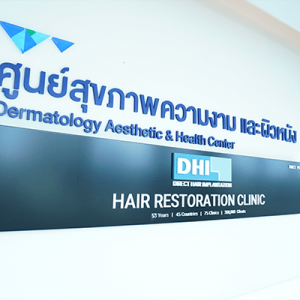
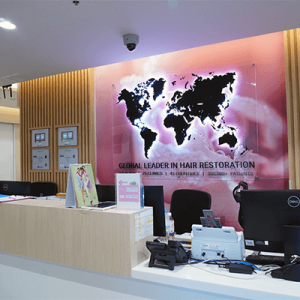
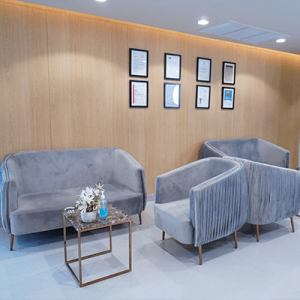
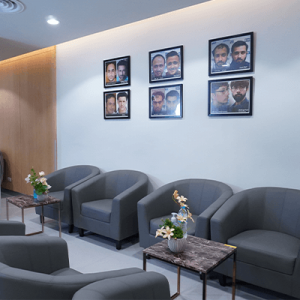
Two more hair transplant techniques are available in Thailand: follicular unit transplantation (FUT) and follicular unit extraction (FUE).
Non-Surgical Hair Loss Treatments
- Platelet-Rich Plasma (PRP) Therapy: PRP therapy involves injecting the patient’s platelets into the scalp to stimulate hair growth.
- Low-Level Laser Therapy (LLLT): LLLT uses red light to stimulate hair follicles, promoting growth and reducing hair loss. It is a non-invasive treatment that can be done in clinics or at home with specialized devices.
Herbal and Natural Remedies
Bangkok provides a variety of herbal and natural treatments, utilizing traditional Thai medicine alongside modern herbal products. These treatments feature herbal shampoos, conditioners, and scalp serums made from ginseng, coconut oil, and other local herbs renowned for their hair-strengthening benefits.
By integrating advanced medical treatments, surgical options, and natural remedies, Bangkok delivers comprehensive solutions for hair loss.
Direct Hair Implantation (DHITM), Follicular Unit Extraction (FUE), and Follicular Unit Transplantation (FUT) are all hair restoration techniques, but they differ in their procedures, advantages, and outcomes. Here’s a detailed comparison:
Follicular Unit Transplantation (FUT)
Procedure:
- A strip of scalp is removed from the donor area, typically from the back of the head.
- The strip is dissected into individual follicular units under a microscope.
- The follicles are then implanted into the recipient area.
Advantages:
- Cost-Effective: Generally less expensive than FUE and DHI.
- Higher Yield: May yield more grafts in a single session.
Disadvantages:
- Scarring: Leaves a scar in the donor area, which can be noticeable with short hair.
- Longer Recovery: The healing process is longer due to the incision and suturing required.
- Potential Discomfort: Patients may experience more discomfort during recovery, a painful procedure.
Follicular Unit Extraction (FUE)
Procedure:
- Hair follicles are extracted individually from the donor area using a punch tool.
- The extracted follicles are then manually implanted into the recipient area using forceps, a slit made by a technician, and then grafts kept by forceps in the hole.
Advantages:
- Minimally Invasive: FUE involves fewer scars and faster recovery time than the FUT hair transplant procedure.
- Flexibility: Suitable for patients who prefer short hair since the tiny scars are less noticeable.
Disadvantages:
- Labor-Intensive: Compared to other techniques, the process can be lengthy, especially for large areas.
- Skill-Dependent: The success heavily depends on the surgeon’s skill and experience.
- Painful Procedure: There will be pain because of a cut made by a sharp blade during implantation. However, the entire procedure is run after local anesthesia implementation.
DHITM (Direct Hair Implantation) Technique
The DHITM technique distinguishes itself from traditional hair transplant methods using a unique DHI implanter pen device. This pen allows for the direct implantation of hair follicles into the recipient area without creating prior incisions or channels.
Here’s how the process works:
- Extraction: Individual hair follicles are meticulously extracted from the donor area using a micro motor with an excellent punch tool, ensuring minimal damage and scarring with the hair transplant cost in Thailand.
- Preparation: The extracted hair follicles are kept in a specialized solution to enhance their viability and growth potential.
- Implantation: Each follicle is directly implanted into the recipient area using the DHI implanter pen. The pen lets the surgeon control each implanted follicle’s angle, depth, and direction, ensuring a natural-looking result.
Advantages of DHITM
- Precision: The DHI implanter pen enables precise control over implantation, resulting in natural hair growth patterns that blend seamlessly with existing hair.
- Minimally Invasive: The absence of pre-made incisions reduces trauma to the scalp, leading to faster healing and less postoperative discomfort.
- Higher Survival Rate: The careful handling and immediate implantation of follicles increase their survival rate and improve overall hair density.
- No Shaving Required: Unlike other methods, the DHITM technique does not require shaving the entire scalp, allowing for a more discreet procedure.
- Customized Results: The ability to control the placement of each follicle allows for personalized results tailored to the patient’s specific needs and aesthetic goals.
Exclusive Availability
Patients can access the latest DHITM hair transplant technique at the DHITM Thailand clinic, which is exclusively available in Bangkok, Thailand, at Ruamjairak Hospital Soi Sukhumvit 62, Phra Khanong Tai, Phra Khanong, Bangkok 10260, and performed by skilled, certified DHI surgeons.
The hospital is renowned for its state-of-the-art facilities, experienced medical professionals, and commitment to patient care. By offering the DHITM technique, the hospital ensures that patients receive the highest standard of hair restoration, resulting in natural, long-lasting results and renewed confidence.
Why Choose the DHI Hair Transplant Technique in Bangkok, Thailand?
Choosing the DHI Hair Transplant Technique in Bangkok, Thailand, offers several advantages:
- Advanced Technology: The DHI technique utilizes the latest hair transplant technology for precise and natural-looking results.
- Expertise: Bangkok boasts highly skilled surgeons with extensive experience in DHI procedures.
- Cost-Effective: Competitive pricing makes high-quality hair restoration more accessible.
- Minimal Downtime: The minimally invasive nature of DHI ensures quicker recovery and less postoperative discomfort.
- Comprehensive Care: World-class medical facilities in Bangkok provide excellent patient care and support throughout the treatment process, ensuring optimal outcomes.





